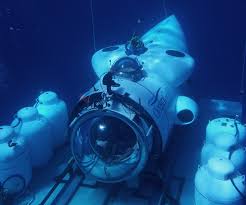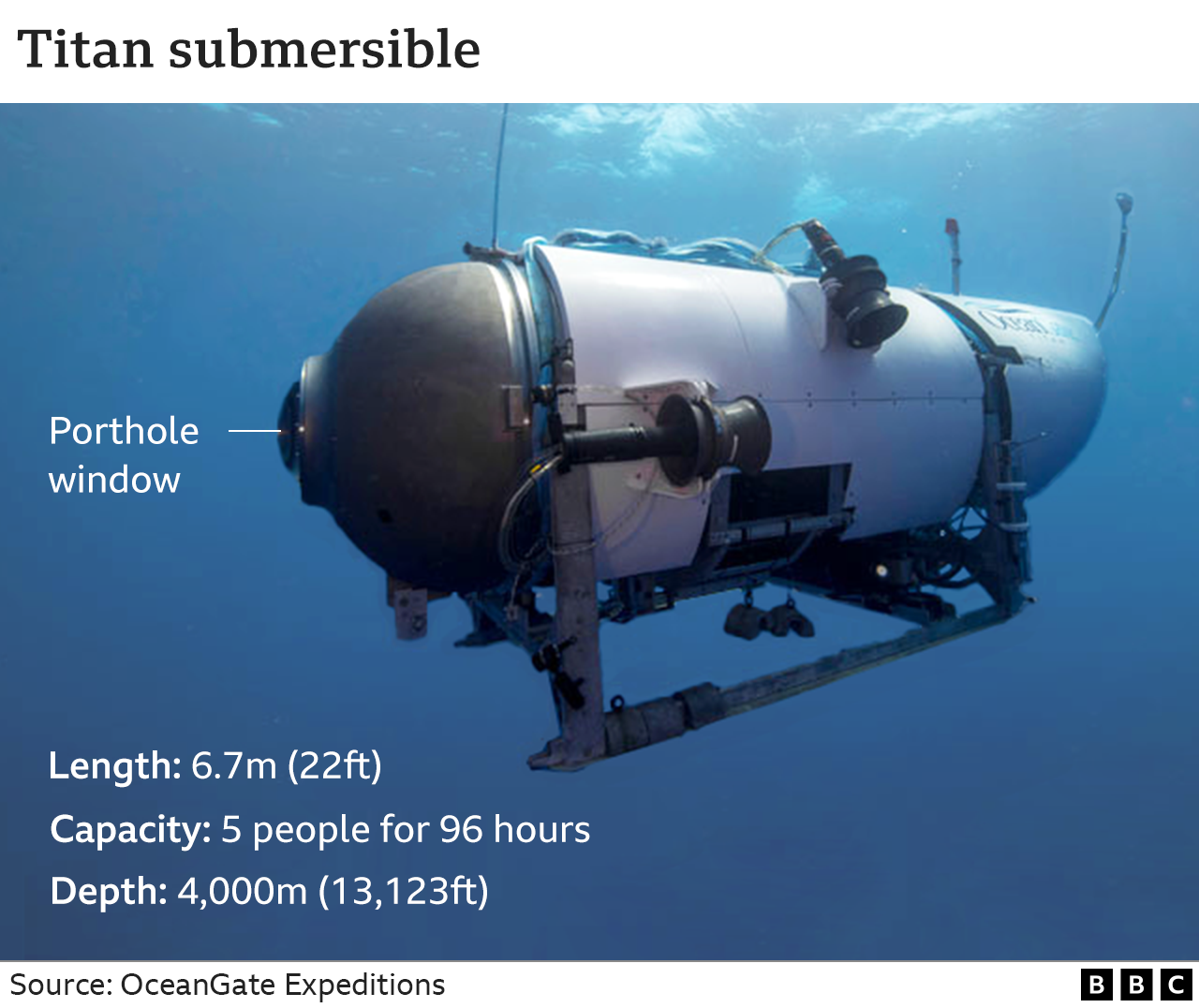Tech
Missing #Titanic submersible: The factors that could affect crew’s oxygen supply

It is a claustrophobic, terrifying prospect – being trapped in a 22ft submersible, potentially thousands of feet underwater, with oxygen running out.
The exact whereabouts of the Titanic submersible and the condition of the five crew onboard are unknown. It is thought that, if the vessel is still intact, it may have just a few hours of oxygen remaining, creating a race against time to find the sub before it is too late.
However, that timeline is not necessarily rigid. Dr Ken LeDez, a hyperbaric medicine expert at Memorial University in St John’s, Newfoundland, has told BBC News that, depending on conditions, some of those aboard could survive longer than expected.
“It depends on how cold they get and how effective they are at conserving oxygen,” he said, adding that shivering will use up a lot of oxygen, while wrapping up in a huddle can help to conserve heat.
He said running out of oxygen is a gradual process. “It’s not like switching off a light, it’s like climbing a mountain – as the temperature gets colder and metabolism falls [it depends] how fast you ascend that mountain,” he said.
While admitting that we do not know the full situation inside the submersible, Dr LeDez said conditions could be different person-to-person, and that although it is a “disturbing conversation”, some could survive longer than others.
On Wednesday, Rear Admiral John Mauger from the US Coast Guard said there were a number of unknowns in the search and rescue mission.
“We do not know the rate of consumption of oxygen per occupant on the sub,” Rear Adm Mauger told the BBC.
Dr LeDez also said that running out of oxygen is not the only danger those on board face.
The vessel may have lost electrical power, which is likely to have a role in controlling the amount of oxygen and carbon dioxide inside the vessel.
As the oxygen level falls, the proportion of carbon dioxide being breathed out by the crew will be rising, with potentially fatal consequences.
“As levels of carbon dioxide build up, then it becomes sedative, it becomes like an anaesthetic gas, and you will go to sleep.”
Too much of the gas in a person’s bloodstream, known as hypercapnia, can kill them if not treated.
Former Royal Navy submarine captain Ryan Ramsey says he looked at videos online of the inside of Titan and could not see a carbon dioxide removal system, known as scrubbers.
“That for me is the greatest problem of all of them,” he says.
At the same time, the crew are at risk from hypothermia, where the body gets too cold.
According to Capt Ramsey, if the sub is on the seabed, the water temperature will be about 0C. If it has also lost electricity, it will not be generating any power and therefore cannot generate heat.
But hypothermia “could be their friend”, said Dr LeDez.
“There is a possibility if they cool down enough and lose consciousness they could live through it – rescuers know this,” he said, adding that the body will automatically try to adapt to survive.
However on the flip side, hypothermia, the lack of oxygen and the build-up of carbon dioxide within the sub mean the crew’s ability to make contact with the search and rescue mission, such as by banging on the hull at regular intervals to try and attract attention, will dwindle.
“If they’re unconscious, they’re not going to be able to do much to help themselves,” says Dr LeDez.

While the Coast Guard has warned there is probably little oxygen left, the crew may be able to conserve their supplies – at least for a while.
Mr Ramsey says slowing their breathing would also help but admits this could be difficult considering the stress they would be under.
Dr LeDez says they could also spread out carbon dioxide-absorbing granules or reduce their power use if they still have electricity.
In terms of food and water, the Coast Guard said the crew had some “limited rations” on board but couldn’t say how much.
Despite all these challenges, Dr LeDez urges against cancelling the search-and-rescue operation too soon, saying they might be able to survive even when oxygen levels are very low.
“If anybody can survive in it, you know, it’s these individuals,” he says. “It just depends on them having power and depends on them having light to be able to find things and make these controls, but absolutely, they could still be alive.”
-BBC,Getty Images.


 News13 hours ago
News13 hours agoNIGERIAN BREWERIES PARTNERS OZA CARNIVAL

 Top Stories39 minutes ago
Top Stories39 minutes agoTinubu’s Aide Condemns Plan To Reinstall ‘Jesus Is Not God’ Banner In Lekki Mosque

 Top Stories1 hour ago
Top Stories1 hour ago2025 Budget Cannot Address Nigeria’s Economic Challenges – Atiku

 News1 hour ago
News1 hour agoPetrol To Sell ₦935/Litre From Today – IPMAN

 News50 minutes ago
News50 minutes agoPresident Tinubu’s reforms not responsible for food stampedes – FG

 Entertainment52 minutes ago
Entertainment52 minutes agoI will be more influential in Nigeria than UK – Tobi Adegboyega








